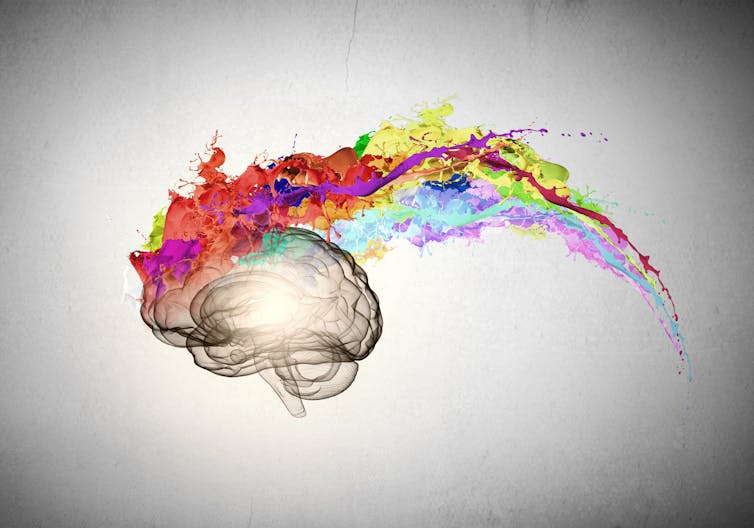
Clive Cazeaux, Cardiff Metropolitan University
Knowledge can take many forms. There is “knowledge by acquaintance”, as in knowing a person or place. There is propositional knowledge, or “knowledge that” – for example, knowing that the UK voted to leave the EU in June 2016. There is also “knowledge how”, as in knowing how to ride a bicycle.
But can something as subjective and open to interpretation as art be knowledge? Art certainly involves knowledge. An artist may know how to draw using charcoal on paper, or know how to stretch a canvas. But what about an actual artwork? Can it be a type of knowledge? I think it can, and as I argue in my new book, philosophy can help.
Today, more and more university art departments and schools regard art as a form of research, and so as a “contribution to knowledge”. This has largely come about due to research assessment exercises that rank departments on their publications, and allocate government research funding based on the rankings.
Up until this point, art within academia had been taught as a series of skills, as well as the exploration of ideas, along with some historical and theoretical context – but it had not been a research subject. And so “artistic research” was born. The only problem is that no one is entirely certain what that is.
It is this uncertainty that makes the topic ripe for philosophical examination. The philosophies of art and knowledge have criss-crossed one another from Plato to the present, and, in doing so, have revealed the various ways in which art and knowledge can stand in relation to one another. There are many theories that work against the idea of art being knowledge. Descartes’s emphasis on knowledge as “clear and distinct” ideas, and John Dewey’s assertion that art is “distinctively aesthetic” with its own “integrity” that lifts it above knowledge, are just two examples.
However, there are philosophers who place art and knowledge in a more constructive relationship. They focus on the nature of experience, and consider what kind of processes have to be at work in order to make experience continuous and meaningful. This locates knowledge within experience rather than something that exists apart from it.
One such philosopher is Immanuel Kant who argued that thought and sensation depend on one another. On this basis, the varieties of media and meanings that can be found in art, rather than being dismissed as uncertain subjectivities, are recognised as having an effect on the wider circle of concepts through which a subject is defined and articulated.
Art as research
So what does artistic research look like? As with any research, there is the initial scoping of the territory that identifies key themes, concepts and sources. With artistic research, some of the sources will be artists and selected artworks. The interesting part is then looking at the practice of the artist who is going to be the researcher, and how it and the territory combine to create a research question.
Take, for example, the study of intimacy conducted by performance artist Helena Sands as part of her fine art PhD at Cardiff Metropolitan University. Her literature review reveals that intimacy is open to a wide range of contrasting and conflicting meanings – for example, physical, sexual, at work, desired, unwanted, unexpected, and with strangers. It is this capacity for conflicting meanings that interested Sands. What being an artist enabled her to do was to consider the ways in which performance can articulate and extend this capacity for conflict.

Dr Yiota Demetriou, Author provided
Her PhD performance DNR took objects that are connected with familial intimacy within the home, such as photographs and milk. She applied them to her body, through pasting and pouring. The milk and the photographs acquired new, darker associations: the milk – normally a bond between mother and child and a source of nutrition – became a form that probes her body, soaking and damaging the family photographs that are placed on Sands’ skin, turning images that had represented togetherness into symbols of separation.
So how is this knowledge? By creating unconventional combinations and arrangements, through performance, Sands made new ways of recognising how intimacy is surrounded by contrast and conflict. What emerged from her work was the importance of concepts that lie on the borders of intimacy, and how performance can articulate these.
Artistic research has its critics, but they rely upon a romantic separation between art and other subjects. When artist Sir Michael Craig-Martin dismissed fine art PhDs for having merit only within academia and not the art world, he failed to recognise that artistic research provides a setting in which artists can explore how their work might bring new meaning to a subject. Artists may have to adopt methods from other subjects, but these will have aesthetic properties of their own that can add to the art.
There is the worry that artistic research might amount only to the illustration of research themes. But this can be avoided if the artist holds on to the autonomy of art, and its capacity for generating meanings through the expressions and surprises that come from exploring materials and situations in unconventional ways. These meanings are new – they are not just representations of existing propositions.![]()
Clive Cazeaux, Professor of Aesthetics , Cardiff Metropolitan University
This article is republished from The Conversation under a Creative Commons license. Read the original article.



